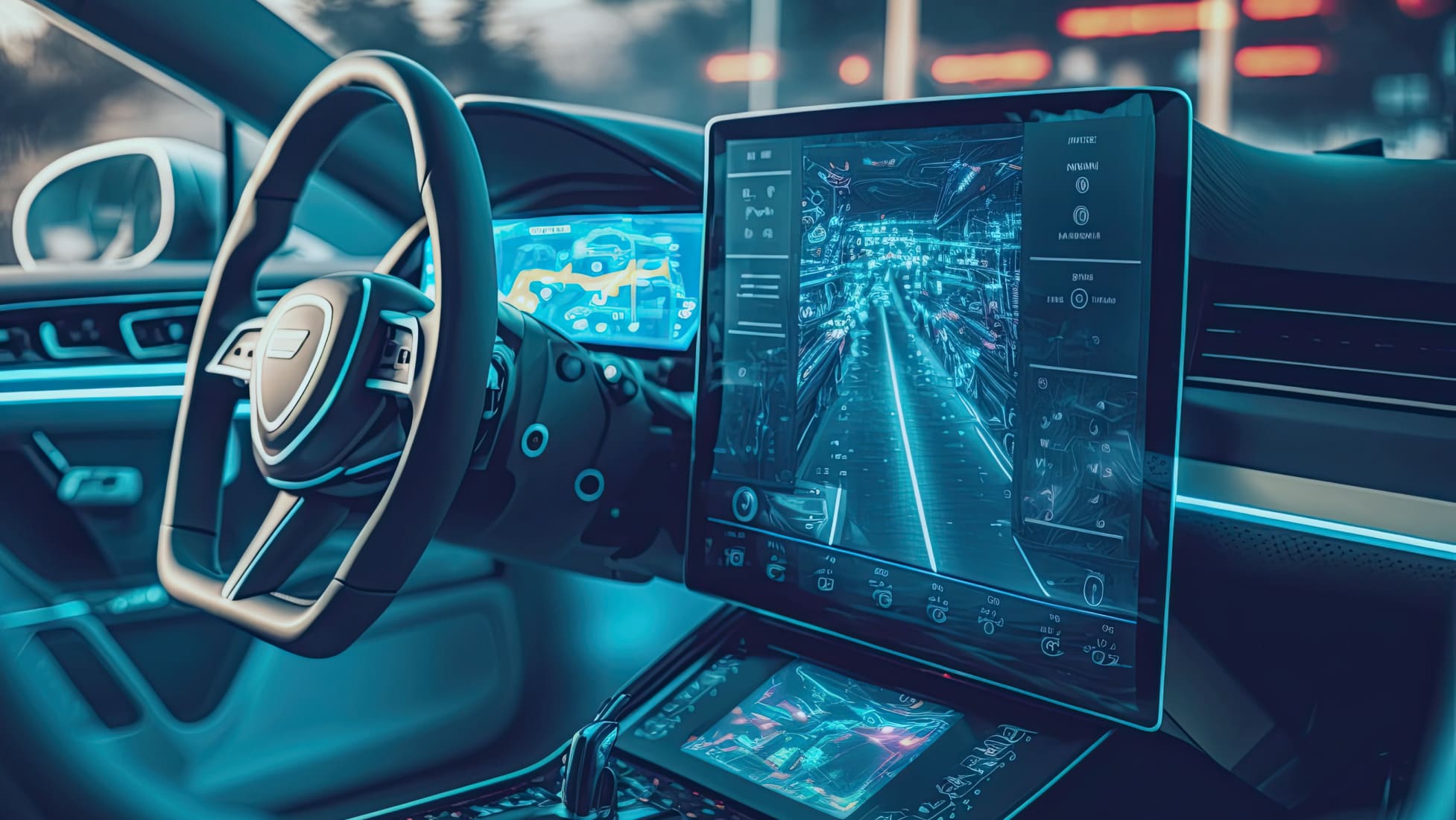In recent years, road safety has seen a significant enhancement thanks to the integration of advanced technology in vehicles. One such groundbreaking innovation is the Driver Monitoring System (DMS) in cars. This system is not just a technological marvel; it’s a life-saving tool that is drastically reducing car accidents globally. In this comprehensive guide, we’ll explore how driver monitoring systems are making roads safer and how they connect to advanced fleet management software, a critical component in today’s vehicle safety and management.
Understanding Driver Monitoring Systems
What is a Driver Monitoring System?
A Driver Monitoring System is an advanced technology integrated into modern vehicles to ensure the driver’s attention remains on the road. It uses sensors and cameras to monitor the driver’s behavior, detect signs of drowsiness or distraction, and provide alerts to refocus their attention. This innovative system plays a crucial role in reducing accidents caused by human error.
How Does It Work?
The system works by using cameras and sensors positioned around the driver’s seat. These tools analyze various aspects such as eye movement, head position, and even facial expressions to gauge the driver’s alertness. If the system detects any signs of fatigue or distraction, it triggers visual, auditory, or haptic alerts to regain the driver’s attention.
The Core Components of a Driver Monitoring System
- Cameras and Sensors: The heart of any DMS lies in its cameras and sensors. These are strategically positioned to capture a comprehensive view of the driver’s face and upper body. High-resolution cameras can detect even the minutest changes in facial expression or eye movement, while infrared sensors work effectively under different lighting conditions.
- Data Processing Unit: This unit is the brain of the DMS. It processes the input from cameras and sensors using advanced algorithms. This unit is responsible for interpreting the data, like the direction of gaze, blink rate, and head position, to assess the driver’s state of alertness.
- Alert System: The system uses auditory, visual, or haptic signals to alert the driver. These alerts are designed to be noticeable but not overly startling, to safely bring the driver’s attention back to the road.
The Impact on Road Safety
Enhanced Accident Prevention
- Proactive Approach: Traditional safety systems in vehicles, like airbags or ABS, are reactive, deploying only after an incident has occurred. In contrast, DMS is proactive, aiming to prevent accidents before they happen by ensuring the driver’s focus and alertness.
- Reducing Fatalities and Injuries: The early detection and intervention capability of DMS play a crucial role in reducing the severity and frequency of accidents. By alerting drivers to potential risks, such as drowsiness or distraction, DMS can prevent accidents that could lead to fatalities or serious injuries.
Impact on Driver Behavior and Training
- Behavioral Modification: Continuous monitoring and feedback can lead to a significant change in driving behavior. Drivers become more conscious of their actions, such as avoiding phone usage or recognizing the early signs of fatigue.
- Customized Training Programs: Data collected by DMS can be used to develop personalized driver training programs. For instance, if a driver is frequently alerted for distraction, targeted training can be provided to address this specific issue.
Safety Statistics and Research
- Research Findings: Various studies have demonstrated the effectiveness of DMS in reducing accidents. For example, research has shown that systems detecting driver inattention can reduce crash-relevant events by a significant percentage.
- Insurance Implications: The effectiveness of DMS in preventing accidents has also caught the attention of insurance companies. Vehicles equipped with such systems might benefit from lower insurance premiums due to their decreased risk of accidents.
Advanced Driver Assistance Systems (ADAS) Integration
- Collaboration with ADAS: DMS often works in tandem with other ADAS features like lane-keeping assist and adaptive cruise control. When DMS detects inattention, these systems can provide additional layers of safety by keeping the vehicle in its lane or maintaining a safe distance from other cars.
- Creating a Comprehensive Safety Net: The integration of DMS with ADAS creates a comprehensive safety net around the driver, addressing both human error and external driving conditions.
Global Road Safety Impact
- Worldwide Adoption: The adoption of DMS is becoming more widespread, with many countries implementing regulations that mandate such systems in new vehicles. This global trend is a testament to the system’s effectiveness in enhancing road safety.
- Reduction in Traffic Incidents: Countries with high adoption rates of DMS have reported noticeable reductions in traffic incidents, particularly those resulting from driver inattention or fatigue.
Technological Advancements and Future Directions
- Evolution of Technology: As technology evolves, future versions of DMS are expected to be even more sophisticated, with improved accuracy in detecting a wider range of inattention symptoms.
- Integration with Autonomous Vehicles: As the automotive industry moves towards autonomous driving, DMS will play a vital role in ensuring the safety of semi-autonomous and fully autonomous vehicles, especially in situations where control needs to be handed back to a human driver.
Connection to Advanced Fleet Management Software
Integration with Fleet Management
The integration of driver monitoring systems with advanced fleet management software represents a leap forward in vehicle safety and efficiency. Fleet management software, equipped with DMS data, can analyze driver behavior patterns, predict potential risks, and provide insights for training and improvement.
Benefits for Fleet Operators
For fleet operators, this integration means enhanced safety for drivers, reduced accident-related costs, and improved compliance with safety regulations. It also aids in maintaining a high standard of driving across the fleet, ensuring all drivers adhere to safe driving practices.
Trends in Driver Monitoring Systems
Evolution and Future Prospects
The evolution of driver monitoring systems is ongoing, with new advancements emerging regularly. Future systems may include more sophisticated AI algorithms for better accuracy in detecting various states of driver inattention. Integration with other vehicle safety systems, like automatic emergency braking, is also on the horizon.
The Role of AI and Machine Learning
AI and machine learning play a pivotal role in the advancement of DMS. These technologies allow for more accurate interpretations of data, enabling the system to learn from past incidents and improve its predictive capabilities.
Implementation Challenges and Solutions
Overcoming Privacy Concerns
One challenge in implementing driver monitoring systems is addressing privacy concerns. It’s crucial to ensure that the data collected is used solely for safety purposes and is well protected. Transparent policies and robust data security measures can help alleviate these concerns.
Cost and Accessibility
Another challenge is the cost of implementing these systems, especially for smaller operators. However, the long-term benefits, such as reduced accident rates and lower insurance premiums, often outweigh the initial investment.
Conclusion
Driver Monitoring Systems in cars are not just a technological advancement; they’re a major step forward in ensuring road safety. By continuously monitoring driver behavior and alerting them to potential dangers, these systems significantly reduce the likelihood of accidents. When combined with advanced fleet management software, they offer an even greater scope for enhancing road safety and efficiency. As these systems evolve, we can expect our roads to become safer, making every journey a more secure experience.



